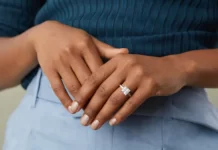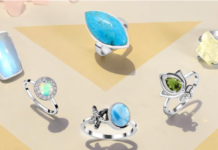Solitaire Diamonds rings are the first choice for engagements, weddings and anniversaries among couples nowadays.
The young couples are now going gaga over the vintage and antique jewellery pieces lately. These many in love people want to make their special day even special with something rare to find.
While talking about the unique and rare vintage diamonds, Old European cut diamonds are arguably outstanding. These classic-cut diamonds are one of a kind.
But before opting for any ring for your big day you must go through a bit closely about these undisputedly elegant diamonds.
What is an Old European Cut Diamond?
Antique jewellery lovers know the worth of an old European cut diamond. This diamond cut belongs from the year 1890 to 1930. The European cut diamond has 58 facets similar to the modern cut diamond. These facets are comparatively larger than the round cut diamonds. These vintage rings were majorly designed by hand and every diamond was unique in its form. The candlelight was quite famous during this era, so the diamond cut was designed to maximize the sparkle under this light.
History Of Old European Cut Diamond:
Old European cut diamonds were extremely popular during the Edwardian and Victorian eras. The round cut diamonds before this period was called mine cut diamonds and their successor design was inspired by this cut itself, it was named the modern cut. All these designs were created by hand and lacked mathematical precision like the modern cut diamonds designed by lasers.
How to Identify An Old European- Cut Diamond?
An old European cut diamond has a smaller table area as compared to the modern cut diamond. These diamonds have asymmetric facets unlike the modern cut diamonds with perfect alignment. These designs hold the higher crown and long facets at the bottom below the girdle. The culet is easily visible from the top table with naked eyes. The facets are rectangular with imperfect edge cuts. These diamonds are primarily designed to reflect their colour more than their brilliance.
Pros and Cons Of The Old European Cut Diamond:
Every jewel piece you purchase has some pros and cons associated with it. Similarly, you must know all the facts related to these precious diamonds before investing in them.
The biggest benefit of buying these absolutely marvelous stones is their uniqueness. As we discussed, the OEC diamonds are crafted by hand, you are surely going to buy a stone with no other same cut piece. This characteristic makes this diamond worth your money. It makes you feel like it’s just made for you literally.
However, this rarity makes it worthy of consideration, it sometimes makes it a little difficult to purchase online. These diamonds are so antique that it’s not easily available for purchase. You have to be very careful and well-learned about these diamonds to avoid any dodging.
The OEC diamonds are cheaper as compared to their successors because of their imperfect cut. These diamonds sparkle a little less but hold an undisputed inner fire in them.
Characteristics Of the Old European Cut Diamond:
These masterpiece diamonds endure some unusual characteristics that set them apart from the other diamonds from this era.
- The culet of the old European cut diamond is quite large as compared to the whale diamond. The culet or the facet from the bottom is so large that it is visible from the table of the diamond sometimes.
- The table or the topmost surface of European cut diamonds is relatively smaller than the modern cut diamonds.
- The diamonds from this era are one of a kind because they are crafted without any laser technique and solely with the hands.
- The number of facets is similar in the modern cut and European cut diamonds but they differ slightly due to their cutting techniques. The edges are asymmetric in the European cut diamonds.
- The girdle of these diamonds seems frosted. This Is the area that connects the bottom and upper parts of the diamond.
- The European cut diamond seems taller in comparison to the modern cut diamonds. The crown of these diamonds is quite high with the long facets at the bottom area.
Are Old European Cut Diamonds Valuable?
As these diamonds belonged to the Victorian era, these OEC diamonds were handcrafted and no longer produced. This makes these diamonds unique and rare to find. The value of the diamond however depends on its cut. The Old European cut diamonds have poor grades as compared to the modern cut design but still are worthy of your money. It can be considered a prized possession of your antique jewellery collection.
How to Take Care of Old European Cut Diamond?
While cleaning your diamonds you should completely avoid chemical-based cleansers and clean up your jewellery with lukewarm water and your regular dishwashing soap. Do not rub and clean it with a gentle touch. Dry it with a towel and store it in a linen cloth.
Read Also: Top 7 Businesses Growing Rapidly in Australia
These diamonds are bought and sold many times and travel a long way before finally reaching your jewellery box. So, the diamonds may get chipped easily. The lower grade diamonds are possibly more prone to get chipped.
Tips for Buying an Old European Cut Diamond
- As you look out for the diamonds, whether it be an antique or any sort of modern piece, you must consider your preferences, budget, and style. Diamonds are a big investment so considering all these factors are necessary before choosing any random jewel piece on another person’s recommendation.
- You must choose these rare pieces to complete your collection of vintage jewellery. The OEC diamonds are getting scarce and having one of these will be a fair purchase in the future. The old European cut diamonds are used for mounting the Edwardian, Victorian or Art deco jewellery by many buyers.
- Verify the vendor and check out their reviews before buying these diamonds. These diamonds are generally not sold at the local vendor stores. Don’t get tricked by any such vendors and do thorough research for the authentic vendors.







